Jatropha (Jatropha) is directly related to the Euphorbiaceae family. This genus is represented by shrubs, trees, and also herbaceous plants that have milky sap. In nature, it can be found in the tropical regions of Africa and America. The name of such a plant is derived from the Greek words Jatrys - "doctor" and tropha - "food". Jatropha is a rather unusual plant. It has a bottle-shaped stem. It is naked throughout the winter period, but at the beginning of spring, umbrella-shaped peduncles appear, consisting of small red flowers. After some time, leaves with long petioles begin to grow. Jatropha is very difficult to find in flower shops.
If you wish, you can try to find it from florists who collect succulents, as well as in botanical gardens. The large jatropha species is very expensive, but it is very simple to care for such a plant.
This plant can bring zest to any interior as well as bonsai. It blooms regularly, and bright umbrellas on long legs look quite impressive. Often, at first, the jatropha begins to bloom, and then broad-lobed leaves with long petioles, which are 10-20 centimeters long, grow.
Content
Jatropha care at home
Illumination
It should be placed in a well-lit, sunny place, but there should be good shading from the direct rays of the sun. East or West orientation windows are best suited. A newly acquired plant needs gradual accustoming to bright light, as burns can appear on the foliage. The same applies to plants after prolonged cloudy weather.
Temperature regime
In the summer, a suitable air temperature should be 18-22 degrees, and in the winter - 14-16 degrees. In winter, the usual room temperature is suitable for the jatrof, and this greatly facilitates care.
Humidity
It grows and develops quite normally at low air humidity in city apartments, no need to spray. For hygienic purposes, it is necessary to systematically wipe the sheet plates with a damp sponge.
How to water
In the spring and summer, water the plant in moderation. At the same time, the water should be well-settled and soft. Watering is carried out after the topsoil dries. Make sure that there is no stagnation of water in the soil, as rot can quickly appear on the jatroph.With the onset of winter, watering should be reduced. In the event that all the foliage falls off in autumn or winter, watering is stopped completely. Watering should normally start at the beginning of the spring period after the young shoots appear.
Top dressing
It is necessary to feed in the spring-summer period 1 time in 4 weeks. For this, fertilizer is used for cacti. In winter, feeding is stopped.
Earth mix
A suitable soil mixture consists of sod and leafy soil, as well as sand and peat, which should be taken in a ratio of 1: 2: 1: 1.
Transplant features
The transplant is carried out in the spring time 1 time in 2 or 3 years. For planting, low, wide containers are needed. A good drainage layer must be made at the bottom.
Reproduction methods
You can propagate by cuttings or seeds. It is worth remembering that seeds lose their germination very quickly, so their acquisition can be difficult.
Seed set in such a plant, it can also occur when grown at home. However, the flowers will need artificial pollination. To do this, use a soft brush to gently transfer pollen from male flowers to female ones. A distinctive feature of the male flower is the stamens, on the surface of which there is a lot of yellowish pollen. It is worth considering that female flowers bloom first, and therefore pollination should be carried out at the very beginning of flowering. With successful pollination, oval fruits of green color, having one and a half centimeters in length, and inside them there are 2 or 3 long seeds. As they ripen, the fruits turn dark and then burst, scattering the seeds in different directions at a distance of up to 100 centimeters. In this regard, the fetus must be placed in a gauze bag in advance.
For sowing, a mixture is used, consisting of leaf and sod land, peat, and sand, which must be taken in equal parts. Sowing is done superficially. It is necessary that the temperature of the substrate be kept at 25 degrees. Cover the container with glass and put it in a warm place. After 7-14 days, the first shoots will appear. Seedlings are planted in separate containers. They grow very quickly. And after just a few months, they no longer differ much from adult specimens. At first, the leaves are rounded, then they become wavy. 2 years after sowing, the leaf plates become lobed. The thickening of the trunk occurs gradually. The first time the plant will bloom in the 2nd year of life.
You can propagate lignified cuttings... The cuttings are left in the open air for drying, and then they are treated with an agent that stimulates root growth (for example, heteroauxin). Cuttings are planted in a soil mixture consisting of humus and sod land, as well as sand, taken in equal parts. The required temperature is from 28 to 32 degrees. Rooting takes place after 4 weeks. The cuttings that have given roots are planted in pots with a diameter of 7 centimeters.
Diseases and pests
- Rot on the root system, the death of a flower ― Too abundant watering. It should be leaner.
- The foliage turns yellow and dies - settled spider mites... The plant must be moistened at least 2 or 3 times a day from a sprayer with lukewarm water. If the lesion is severe, then it is necessary to treat the jatropha with an insecticide of the appropriate action.
- Flowers are deformed and die off - settled thrips... Give the plant a warm shower and treat with an appropriate insecticide.
- Slow growth - excessive amount of fertilizers in the soil. You need to feed it rather carefully. Before applying fertilizers, the substrate must be well moistened.
- Rotting of the root system, the leaves become colorless and wither - too cold water is used for irrigation. It is recommended to warm up the water a little.
Video review
Main types
Jatropha (Jatropha multifida)
This is a compact bush that can be 200-300 centimeters high. Spectacular leaves are divided into 7-11 parts, while they reach 30 centimeters in diameter. The dark green leaf plate has a slight bluish tint and a light green central part. After some time, they die off, and the lower part of the trunk remains bare. Young specimens resemble a small, very showy palm tree.
The flowers have a rich coral red color. They are collected in umbrella-shaped inflorescences that rise above the foliage on long pedicels that grow from the growing point. In natural conditions, flowering lasts almost all year round, and it is especially abundant in the hottest months. At the end of flowering, triangular yellowish fruits appear, the length of which is 2.5 centimeters. Their whitish oily pulp contains 3 seeds. A centimeter long, brownish seeds are oval in shape.
It is worth remembering that there are highly toxic substances in any part of such a jatropha. If the surface of the plant is damaged, then a translucent sap will begin to flow, causing irritation when it hits the skin surface.
Jatropha gouty (Jatropha podagrica)
This deciduous shrub is a succulent. It has a tuberous thickened trunk. This plant has a very unusual trunk. It is thick at the base and tapers upwards. This form of growth is found in plants of stony deserts, due to the fact that the formation of the root system is difficult and the accumulation of fluid therefore occurs in the lower thickened part of the trunk. Also, a distinctive feature of this type is the petioles, which are attached not to the edge of the leaf, but closer to the middle. Jatropha reaches a height of 50 to 70 centimeters. Lobed leaf plates of a round shape have a diameter of 15-18 centimeters. The color of the leaves is in direct proportion to their age. The shiny young leaves are dark green in color, which gets lighter as they grow. And after they reach their maximum size, they become dull and dark green. The petiole and the seamy surface of the leaf plate have a bluish bloom.
From the point of growth, a flower brush grows, which has the shape of a complex umbrella. At first, small buds are formed, of which only a few are visible (the largest). Their development is rather slow, and after they reach the level of foliage, their growth is significantly accelerated. The buds become brighter, and then small flowers of a centimeter in diameter, having a reddish-coral color, open. The flowers are odorless. On the same inflorescence there are both female and male flowers. Male flowers last only 24 hours, but after some die off, they are replaced by new ones. In this regard, one umbrella can bloom for several weeks. In nature, this type of flowering lasts throughout the warm season.

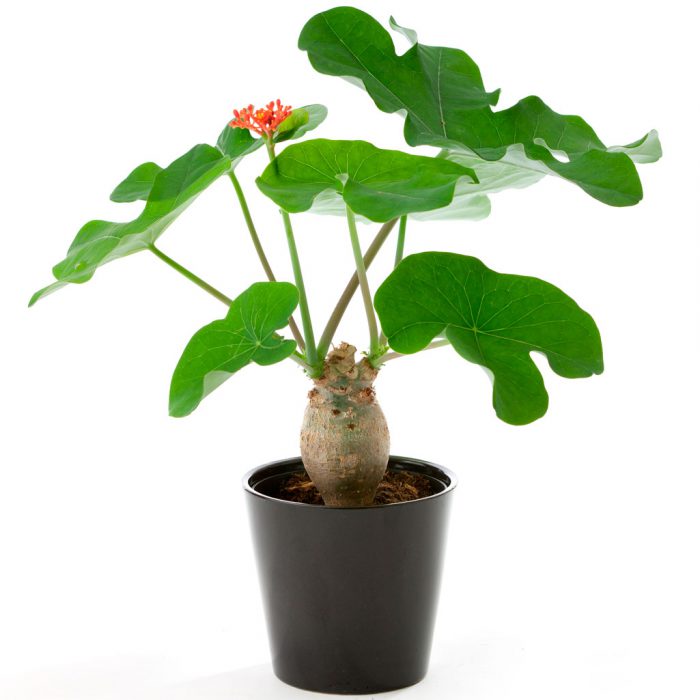
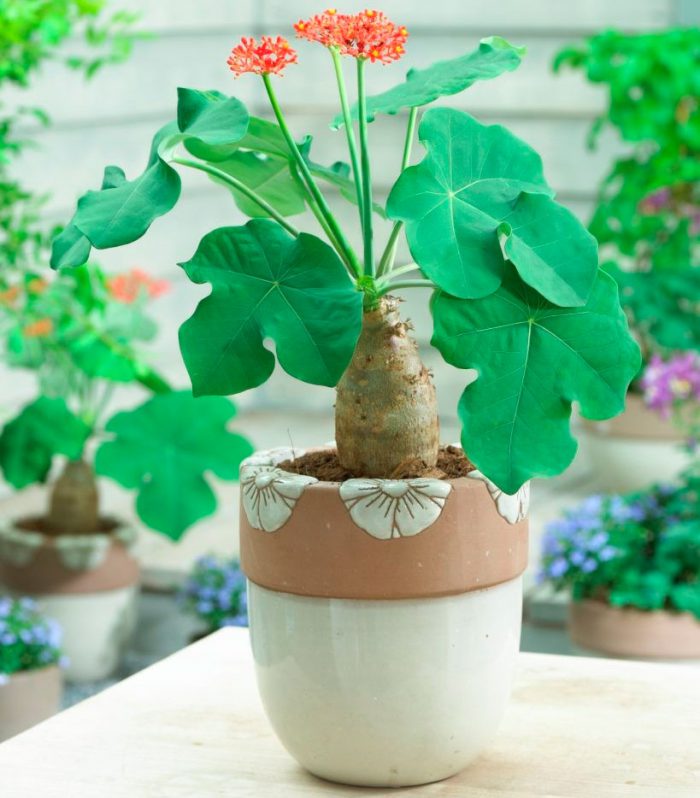
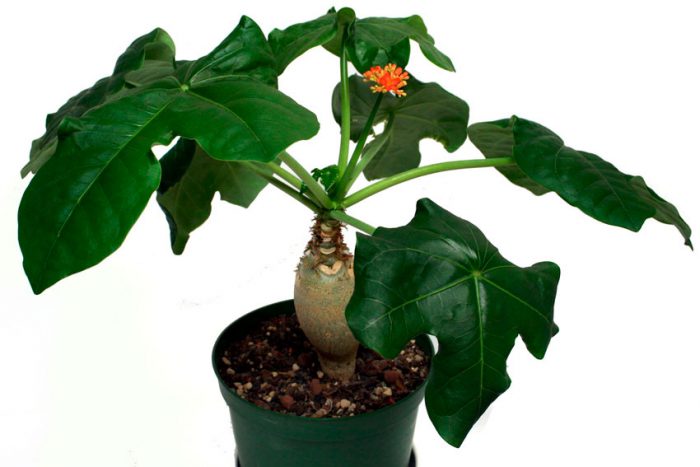
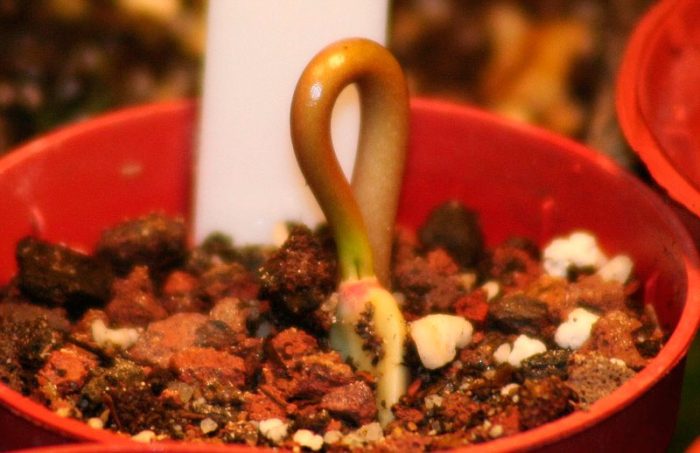
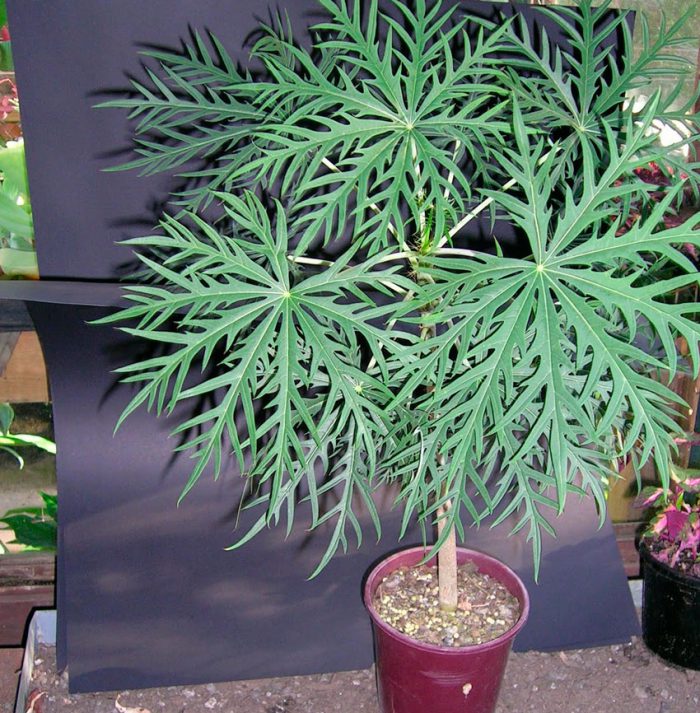
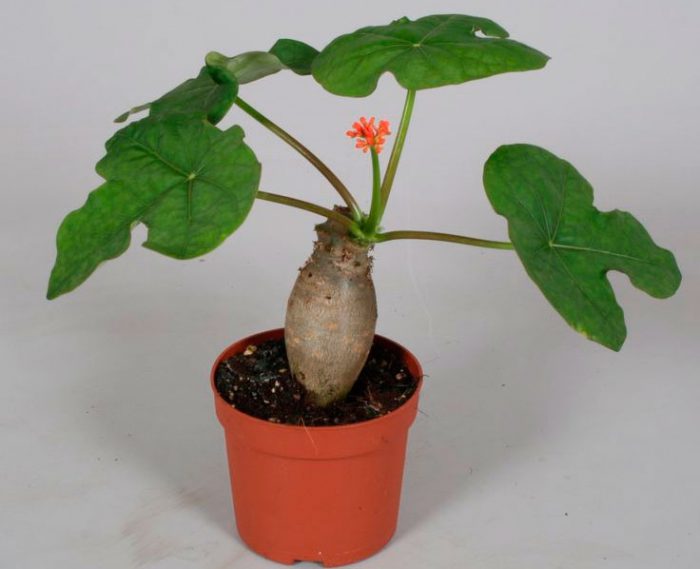




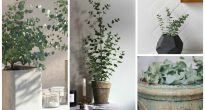

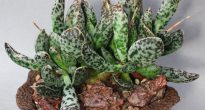
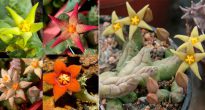


Good day! I bought myself such an amazing plant.
I am very happy.